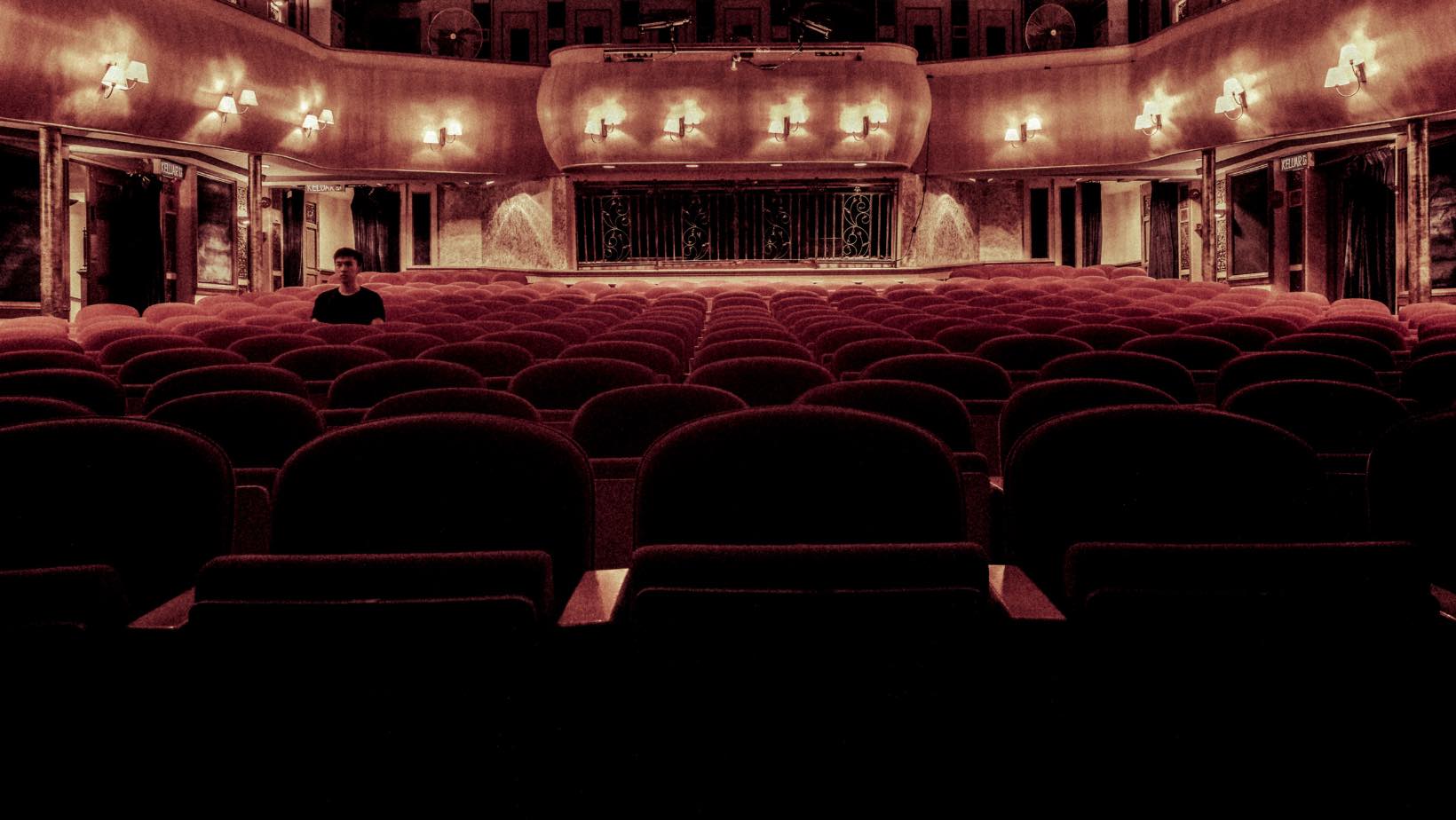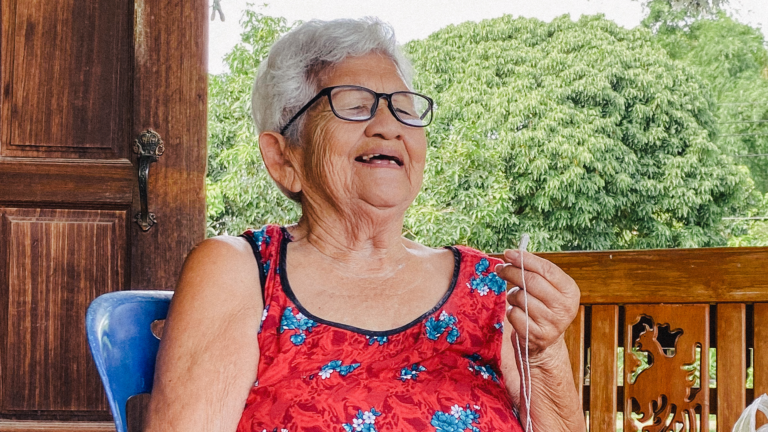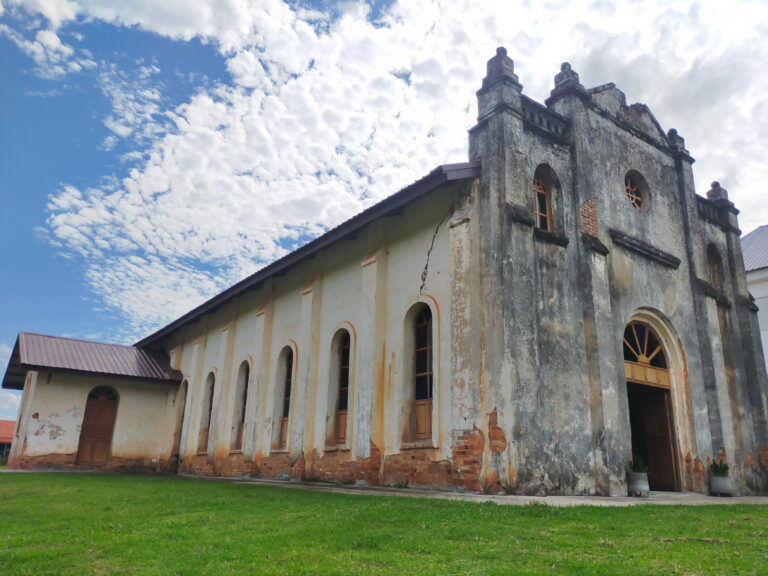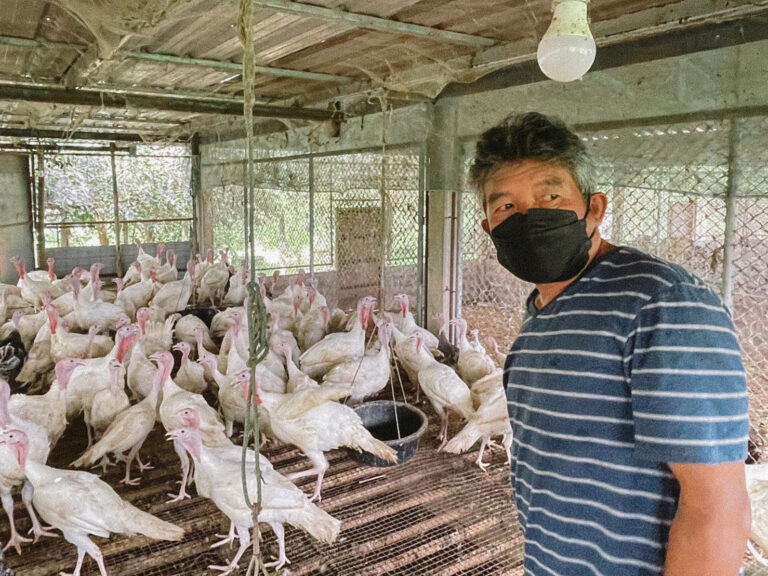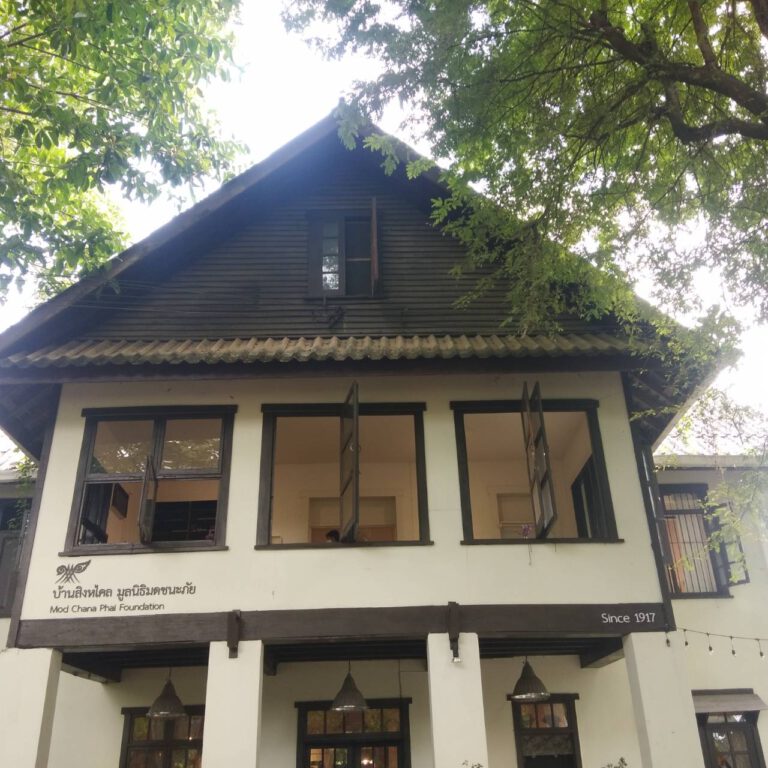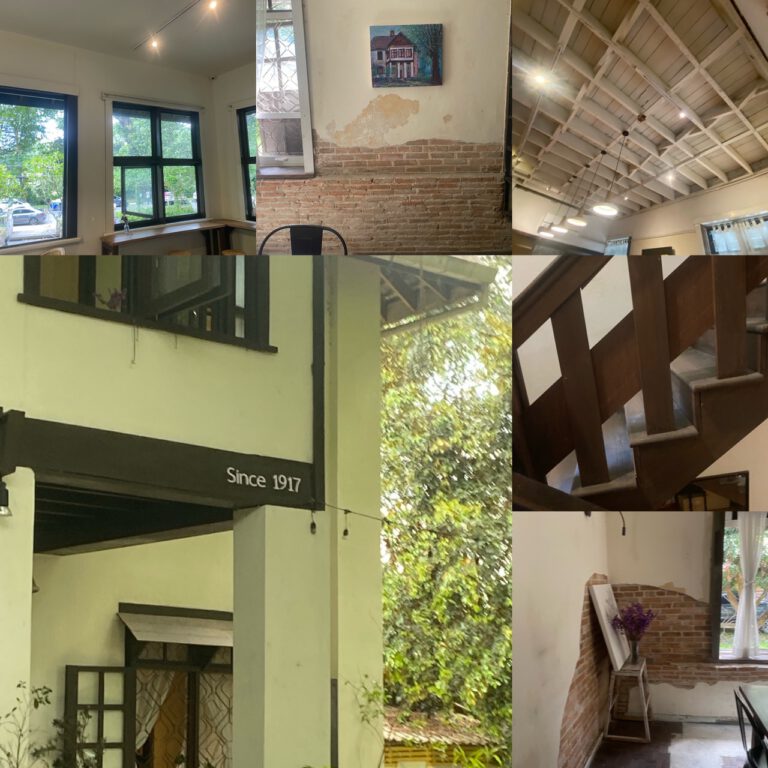Writer: Thanupon Yindee
Research article supporter: Goethe-Instituts Thailand
The concept of “Creative Economy” is one of the development concepts that have been discussed. Much in the past 10 years has been like a new solution to the idea of developing the country. In 2000, BusinessWeek magazine published an article entitled “The Creative Economy”, which discusses the face of the economy in the new century. The most important thing for doing business in the 21st century is the “Power of Ideas”. Investors around the world are at risk because of the “capital” they hold in their hands. It’s not a shortage anymore. But what is lacking is a “good idea” for investment (Creative Design Center, 2008).
In 2001, the concept of Creative Economy became known from the writing of John Howkins entitled “The Creative Economy: How People Make Money From Ideas” by Howe. Gins was the first to define the concept of the creative economy. He had defined the creative economy “Value creation born of human thought” for the manufacturing field that develops into the creative economy is called “Creative Industries” (Howkins, 2001). Howkins describes the relationship between economy and creativity as: “Economy and creativity are not new. But how to understand the features and scope of both things? And how can we combine economy and creativity? to create value and wealth” (UNCTAD – Conference of the Organization for Cooperation for Trade and Development, 2010).
At present, many countries are adopting the concept of creative economy as one of their national development paradigms. Therefore, creativity is a key resource that replaces the dwindling natural resources and is the driver of the global trade economy. However, the concept of creative economy is still a concept that is diverse in terms of definition and form of application because there are various agencies, organizations and academics to define meanings, including depending on the concept of creative economy. adaptation to the economic, social, cultural and lifestyle systems of each country or each of those cities.
The current creative economy development trend is in line with the framework development concept of Thailand the development of the creative economy is one of the important policies and national agendas. From the preliminary study, it was found that Thailand began to attach importance to the creative economy concept in the 8th National Economic and Social Development Plan (1997-2001). At present, the 11th National Economic and Social Development Plan (2012-2016) Thailand focuses on the industrial development goals of Thailand. To be based on the concept of creative industries is mentioned Development of the production of goods and services based on the creative economy by promoting the use of creativity to add value to goods and services Promotion and development of business fields creative potential infrastructure development and creative economy environment. The develop personnel to be able to respond to the needs of both manufacturing and service sectors. At the creative professional level and entrepreneurs to have creative ideas, promote research studies and in-depth development in the field of creative economy and cultural capital and creative city development. In 2010, Thailand hosted the Thailand International Creative Economy Forum (TICEF) under the theme GlobaLOCALisation – Local Move, Global Success. In 2012, Thailand hosted the International Creative Economy Fair. (Thailand International Creative Economy Forum: TICEE) again under the topic Grand to Ground: Capturing Local Value, This is considered to be a trend in Thai society about the importance of the creative economy.
At present, Chiang Mai has initiated the concept. “Chiangmai Creative City”, which is a development by applying the concept of creative economy to the context of the city of Chiangmai. It started in the year 2010 and is currently in the process of implementation. This is born from the idea to develop and support Chiang Mai to be the city of the center of creative industries. Creativity and innovation in line with the vision of the Thai government to develop the creative economy of Thailand. But Chiang Mai, the creative city will include creativity, innovation in contemporary art/culture coupled with modern technology and industrial innovation Agriculture and Healthcare. The creative city was born from Cooperation from the government, private sector and various agencies during the Development period for Chiang Mai. It is a creative city with a period of 15-20 years. The main objective of Chiangmai is the creative city which is to create what already exists, knowledge, history Lanna culture, ways of life This will make Chiang Mai city more attractive including to develop the city of Chiang Mai to be a place Interesting for living, working, doing business and investing with creativity. Development of creative contemporary art and culture industries and strengthening the existing core local industries.
From the reasons mentioned above the concept of creative economy is a concept that has a variety of definitions. Definition has a fairly wide scope as well as a variety of methods in applying to development in various dimensions. There is also a common point and relevance with other concepts such as Creative Industry, Creative Class and Creative Cities. The aforementioned is related to the economy, society, culture as well as daily life style. In the economic dimension “Cultural industry” and “creative industry” are considered to be important components and mechanisms in driving the successful development of the creative economy.
The development of creative industries in the field of performing arts to be ready in terms of basic potential and the ability to compete has a process of studying and understanding the nature of the operating model of industry from entrepreneurs involved in all dimensions both the overall situation problems in business operations especially Business in the creative industry in this field of performing arts has characteristics, qualifications, including business practices that are different from the industry in general. And the action plan is in line with the needs of entrepreneurs involved in the creative industry in the performing arts field and in line with government policies therefore, appropriate and effective promotion guidelines have been analyzed. It can be used as a guideline to drive concrete actions. This will further benefit entrepreneurs in the creative industry in the performing arts field.
In this regard, the preparation of the creative industry development plan in the performing arts field, there is still a very limited amount of information. Both quantitatively and qualitatively, especially statistical data. Therefore, the study and collection of data related to the database structure of the creative industries in the performing arts field to be accurate and interesting. This is another study which can be used as Guidelines for creating a database of creative industries Performing Arts to be able to monitor the progress of the industry as a whole to be used to formulate guidelines for industrial development effectively and keep up with the situation in the long term.
In order to understand the overall picture of the Thai performing arts industrial context, what agencies must be involved? Which group is the main producer? And has a production route the overall picture? Using data from interviews with relevant agencies in the industry. Both public and private which can be summarized as an ecosystem of the Thai performing arts industry as follows:
An educational institution which is the main unit of the production of performing arts workers. Especially artists who have developed their acting skills. Which will consist of Workers who have completed a direct performing arts course or labor in other fields from other occupations or from other industries but have acting skills or have developed acting skills through independent institutions get involved in the performing arts industry.
Each artist has the option to join the workforce in different agencies. Whether in a production company, performing or choosing to be a member of a small group of artists. In fact information from the interview found that artists nowadays tend to be independent artists with other occupations. It is already the main job. And spend most of the rest of the time co-producing with the group of artists to create the theater performance.
When each group’s performance is produced there will be channels to deliver the show to the audience through different locations (Space). The theater group usually uses their own place for performances. The artist groups will have a variety of channels, including art spaces such as the Bangkok Art and Culture Center (BACC), galleries and small theaters (some have their own small theater spaces). Or through various festivals that are usually held in the areas in the above and some festivals are held in community areas this is to create a relationship between activities, artists, performing arts to be part of that community.
However, the Art Management agencies that are very important to the overall picture of the performing arts industry, which is a media support for production or specific operations for the production of the performance for example Artist Management, Company Consulting Company, Production process Management Company, The show sales support company, etc. for Thailand. May not be very familiar with the business model of art management intermediary. Because there is no business of this type in the Thai industry. This caused the artists themselves to have to operate primarily in their own group. It is different from foreign contexts to have a business unit support only this management separated from the group of artists which will give importance to the creation of the performance. Then there will be a support unit to carry out other matters instead, such as sales matters, overall management, etc.
In addition, there will be agencies or persons who are sponsors related to the performing arts industry, whether they are writers, who will have some of their works. To Ignite or lead to a play as well or supporting agencies in stage production such as the elements of light, color, and sound that are important parts of the show ticket office especially online channels or even the media is also contributes to the process of creating and delivering the performing arts to the audience as well.
For the sponsoring agency that is the funder behind the production of performing arts. From the interviews, it was found that the main support agencies are usually international agencies, such as the Japan Foundation, which provide support for many countries. Artists have always been followed by support from government agencies in the country that do not have direct action related to arts such as the Office of Health Promotion Fund (Thai Health) or the Office of Convention and Exhibition Bureau or TCEB, Public Organization, etc. To Support in arts and culture such as the Office of Contemporary Art and Culture (NESDB), and sometimes it will be supported by private agencies. (Sponsorship), such as a form of funding to support the production of art in the country which is seen as a form of social support.
After understanding the overviews of the ecosystem of the Thai performing arts industry. The next step will be presenting the results of the analysis of problems and obstacles of the development of the performing arts industry in Chiang Mai Province. Using data from interviews with stakeholders, including government agencies, private agencies, theater actors, artists, and directors, stage producers,academic, accommodation and tourism business operators as well as organizers of other contemporary art/culture festivals in the Chiang Mai area. The issues can be grouped into 5 areas; including artist issues, Space issues, Show production issues, Marketing Issues and government issues. The details of each aspect are as follows:
• Artist issue
The main problem is artist skill. Especially management skills and other skills in addition to the skills in the production of performances, such as knowledge and understanding of careers as an artist and the utilization of technology, etc. As a result, the artist is unable to live a life of a career as a performance artist primarily, meaning that there is no real professional knowledge or do not have knowledge in business management, etc. Therefore often to engage in other occupations and a part-time performer. In addition, the artist’s career standards are not stable. As a result, it is not supported as a career equivalent to other occupations. Moreover, there are very few hiring or organizing activities in the ChiangMai area each month. Therefore, it cannot create much economic stability for artists.
Even now, there are small groups of artists in the Chiang Mai area and there is a strong relationship between the groups. But the form of artist support from various relevant agencies does not get enough coverage, often supporting artists in the network that are closely related to that agency mainly. Lack of support for other artists. Especially artists who are not yet famous, young artists and artists in different districts.
• Space issue
The overall space issues the local state pays less and less attention to the development of public space. As a result, there is no place for performing arts industry personnel to meet and conduct productions. It took a lot of an effort to find a place for rehearsing and performing. Including a lack of theater space, especially a small theater. The current state theater is not conducive to the use of people in Chiangmai performing arts industry such as The Chiang Mai City Arts / Cultural Center and The Cultural Arts Center of Chiang Mai because of the high cost services and service period only during office hours but the artist has to work outside of working hours. Therefore, the government facility cannot be used. Also there is a problem for the audiences unable to access various performing arts spaces as well. Currently, groups of theater artists in Chiang Mai will use two main areas for gathering and organizing continuous performance activities, Suan Anya Huan Kru Ngon Malik : Northern People’s History Hall and Thepsiri Gallery House.
• Marketing and audience issues,
The major problems in the performing arts industry. It is about the number of audiences watching the performance that are very small scale. Also there is not the main sponsor of the performance as well because of the attitude towards access to performing arts that it must be free and to watch performance is only a matter of a certain group of people not seen as part of life. This may be due to the fact that the Thai education system has not given importance to developing an understanding of the contemporary arts in the first place, for example. There is no public relations channel for upcoming performances in Thailand. There is only a platform of The ShowHopper, that is a voluntary act of people interested in the performance to operate as the main channel to promote some of the upcoming theater performance only. At present, there are other forms of entertainment activities such as watching movies through various Streaming platforms and the cost of making performances continues to rise. Both entrance tickets and travel to various theaters cause the performing arts to be uninteresting. And it’s becoming less and less popular these days. There is also a lack of art support businesses that can help support more operations, production or delivery to markets, such as sales and marketing support businesses or businesses selling work to foreign countries, etc.
• Government issues
Due to current business operations of each unit may not be sufficient for the operations of that unit. As a result, personnel, businesses and agencies in the performing arts industry still rely heavily on the support of government agencies involved in various forms of support. But from the interview I found that government agencies still lack knowledge to understand how the industry operates. As a result, the current support model is insufficient, not diverse, and does not match the operations or needs of industry agencies much. And the process of government agencies also impedes access to support such as Documentation process or budget processes to request annual support causing continuous support and many times the financial support does not cover all expenses. Including funding conditions that limit the content of the performance, lack of measures etc,. About the tax incentives to support both producers and viewers, the state should be more supportive of the infrastructure of the industry both in terms of financial support systems public information service including a more high-quality basic education system and regulations of laws that are more conducive to the operations of industry agencies than the present, such as the law supporting the establishment of a non-profit organization that specifically supports the arts, etc.
From the issues and obstacles presented in the above It made me understand that the production of performances in the present Chiang Mai area what problems are still encountered? In order to understand the context of the situation of various actions which can be seen that most of the problems in each area are the problems that are the main contributing factors. It reflects that most of the problems are in the industry as a whole. Therefore, designing supportive approaches and solving problems should be placed on the development of the fundamentals of the industry for the benefit of the overall operation of the performing arts industry in Chiang Mai city.
The overall picture of the performing arts industry in Chiang Mai still needs to be developed in several areas. From this interview and study, we have compiled a solution to the problem through concepts. “Creative Economy” together with the integration of creating a performing arts space Together with the area of various contemporary art / culture festivals in Chiang Mai, such as the Chiang Mai Design Festiva, Chiang Mai Pride Festival of the LGBTQA+ Community, Chiangmai Bloom Flower Festival, Chiang Mai Music Festival and International school theater association festival, as well as business network of hotel accommodation and creative tour in Chiang Mai. Together with the theater community in Chiang Mai, we present the concept of developing the performing arts industry. The vision of the plan is “Festival Economy ”.
To support in accordance with the vision, this study therefore designed a collaborative approach with the festivals mentioned above. Four approaches have been established as follows:
Approach 1: Raising new performance standards from the issues presented above found that the first issue that should be developed is to develop the show to be more diverse, quality and meet the needs of both local audience and tourists. To have a performance art that is interesting. With more quality production processes and personnel especially Performances should be produced that can present the identity, social issues or main content of each festival. Through the form of presenting a show that is more international and contemporary to answer the question of creating a new image of the performing arts industry in Chiang Mai as well. By the way, to make this approach a reality there must be research, development and creating a variety of performances together with those festivals is required. And to support the exchange of performances with artists in each festival together with the study and application of technology / other sciences to develop and enhance the performance better.
Approach 2: Expanding the audience base for performing arts both in the local area and visiting tourists in Chiang Mai by connecting the design of the festival spaces in Chiang Mai together. This can link to the audience bases of other festivals to meet performing arts performances This will make the number of viewers increase which requires the development of marketing strategies. By the way, to make this approach a reality must instill values and create an understanding of the performing arts through the other festival activities. In order to be able to expand and create a wider awareness of the performing arts both the audience base in various festival areas and nearly 2 million tourists in Chiang Mai each year.
Approach 3 : Incubation of the art management agency in Chiangmai’s performing arts industry. To enhance the specific operations for the performing arts production to be more effective and accurate in the Ecosystem of Chiangmai’s performing arts industry. In order to make this approach a reality, there has to be a training of art managers not only to carry out other matters instead, such as sales matters, overall management, etc. Also, to generate the new idea of creating a connection between people of arts and creative economy concepts.
Approach 4: Build and nurture various infrastructure development performing arts businesses. The performing arts industry in Chiang Mai needs to create an incubate and support performing arts business to be able to operate effectively. It is also a guideline for creating a complete ecosystem of the performing arts field as a whole. By the way, to make this approach a reality. This must develop management/business administration skills for artists and entrepreneurs together. There must be a process of building trust and strengthening internally together continuously. And expand the scope of development through the concept of Festival Economy, so that the growth of creative contemporary art/culture in Chiang Mai is truly valuable to the local people and create interests and excitement for outsiders throughout the year.
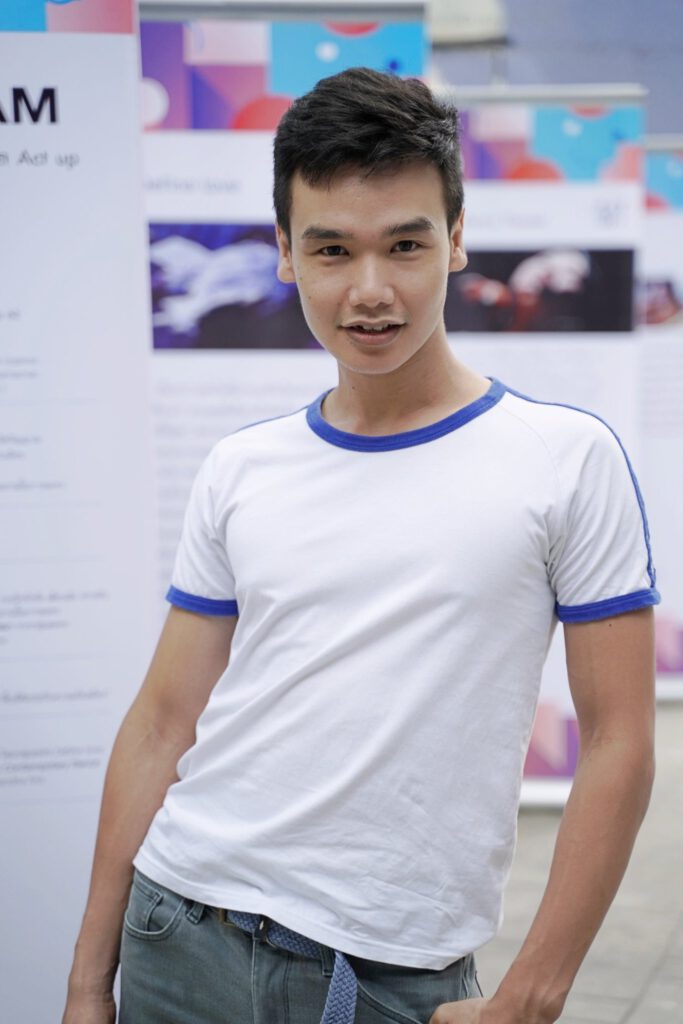
Reference
Department of Intellectual Property. (2010) Information of Creative Economy Development Institute [online]. Available http://www.ipthailand.go.th/ipthailand/index2.php?option=com_content&do_pdf=1&id=1429. (2010)
Ministry of Culture. (2012) Missions and strategies related to creative economy [online]. Available: http://www.m-culture.go.th/.[2012]
Ministry of Science and Technology. (2012) Missions and strategies related to creative economy [online]. Available: http://www.most.go.th/main. (2012)
Ministry of Education. (2012) Missions and strategies related to creative economy [online]. Available: http://www.moe.go.th/moe/th/home/main.php.[555]
Ministry of Tourism and Sports. (2012) Missions and strategies related to creative economy [online].Available: http://www.mots.go.th/main.php?filename=index.,[2012]
Ministry of Industry. (2012) Missions, Strategies, Strategies related to Creative Economy [online]. Available: http://www.industry.go.th/page/index.aspx.,[2555]Torsakul Phanphiphat.(2019) Analysis of the country’s economic policy: a case study, its application to the development of Chiang Mai, a creative city. Thesis Master of Arts, Chiang Mai University
